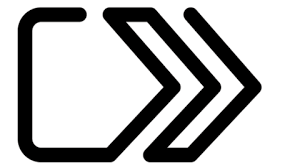Following Amazon, Paypal, Apple Pay and Google Pay, the four payments giants Visa, Mastercard, American Express and Discover will introduce a “one-click” checkout button: Click to Pay. A year ago, Click to Pay, which to the user is reminiscent of Paypal Checkout, was rolled out in the United States. Technical preparations have now started to introduce the payment button worldwide. How does Click to Pay work and what are the benefits for the consumer, the merchant and the various parties in the payment chain? To find out and get a picture of the rollout in the Netherlands, we spoke with Jan-Willem van der Schoot, Country Manager of Mastercard Netherlands and Daniel van Delft, Country Manager of Visa Netherlands.
A new payment button, based on EMV and tokenization
What is Click to Pay in three sentences?
Daniel: “Click to Pay is based on the EMV® Secure Remote Commerce (SRC) standard, developed by EMVCo. The SRC standard makes it possible to process payment transactions consistently on different devices, like smartphones, tablets, desktop computers or smartwatches. In addition, the technology ensures that card and account data can no longer roam unsecured over the internet.”
Why Click to Pay?

Jan-Willem: “The main driver for Click to Pay is the simplification of the customer experience. The smoother the checkout, the less steps, the higher the chance that the purchase will be completed successfully. This is in line with the “card-not-present” trend, where the card number is gradually disappearing from the transaction. Apple was one of the forerunners with Apple Pay.”
Daniel adds: “The second driver is improved security. Click to Pay represents a new step in the constant search for increasingly secure payments. The manual entry of card data in different web shops over and over again is simply more vulnerable to errors and online crime. The option to save this data via card-on-file for follow-up visits offers ease of use, but is not necessarily safe. With Click to Pay, the data is recorded once and encrypted in a Click to Pay profile, and the transaction is handled by means of a security token.”
Will Click to Pay remain limited to the four participating payment schemes, or can other payment brands also join in the longer term?
Jan Willem: “Click to Pay is intended as an open standard. If other payment brands want to join, they will have to report to EMVCo, that deals with certification.”
Daniel: “EMVCo determines the rules for entry, and for the time being Mastercard, Visa, American Express and Discover are the participants. As you can imagine, joining Click to Pay will be easier for one party than for the other. To give a trivial example: suppose WeChat wanted to join, the product will have to be adapted because WeChat handles payments in-app.”
Payments are becoming easier, clearer and safer for consumers
How does Click to Pay work for the consumer?
Jan-Willem: “Consumers now regularly have to reach for their wallets to be able to retype their card details in an online checkout process. Anyone who does this regularly knows how cumbersome it is to have to enter a card number, expiry date and CVV code in a “guest account” for the umpteenth time. With Click to Pay it works differently. The consumer will see a button that contains the new Click to Pay icon, along with the logos of the participating payment brands that are accepted by the merchant.”
![]()
Daniel: “The first time the user clicks on that new payment button, he or she is asked to create a Click to Pay account once. The user id is the same as the email address. In the Click to Pay account, all standard data is recorded that is required to complete the checkout process. Every subsequent time, the data is linked to the transaction “behind the scenes”. The great advantage for the consumer is that every transaction takes place in the same way. And the card details no longer have to be re-entered for every transaction.”
That is very reminiscent of Paypal Checkout.
Daniel: “An important difference for the consumer is that Paypal works with a funding account. As a result, Paypal payments are also more expensive for the merchant. Moreover, Click to Pay transactions are a step more secure than Paypal transactions, because of the tokenization.”

Jan-Willem: “Another difference with Paypal: Click to Pay is not a competitor of the banks, and does not issue its own cards like Paypal. In practice, the customer will choose the payment method that suits him best. Click to Pay, unlike Paypal, has the advantage that it closely matches the familiar mobile banking experience.
Can you give an example?
Jan-Willem: “If authentication above a certain threshold is necessary, it takes place in the well-known online banking environment of the house bank, as a side step of the transaction. That feels familiar.”
And that in turn resembles iDeal.
Daniel: “Indeed, iDeal also matches the familiar online banking environment in terms of look & feel, but consumers will notice that an iDeal transaction is more time-consuming than Click to Pay.”
Simpler payment leads to higher conversion
What do you see as the most important benefit for merchants?
Daniel: “Because the checkout process is so much easier, increasing conversion will be the big advantage for the merchant. Baymard Institute calculated in 2019 that 70% of online store transactions are terminated prematurely because customers change their minds before completing the payment. Because you no longer need to enter card data with Click to Pay, and because separate 3DS verification is no longer required, this dropout will decrease significantly.”
Do you already have analytics to substantiate that assumption?
Jan-Willem: “Click to Pay has only just been introduced in the US and unfortunately no research data is available yet, but everyone understands that a greatly simplified user experience will contribute to increased sales. It is also up to the merchant how he wants to use Click to Pay to strengthen the relationship with his customers.”
Does Click to Pay only work online or also omni-channel, so in the physical retail environment?
Jan Willem: “Click to Pay will soon be available wherever an electronic payment takes place. In that respect it can be compared with Apple Pay. As you know, you can already pay with your Maestro or V PAY debit card, or your Mastercard or Visa credit card. With Click to Pay, it will also become much more common to pay for a purchase in a webshop with your debit card instead of your credit card.”
Daniel: “Whether you’re shopping in Albert Heijn, sitting behind your laptop or in an Uber taxi, the payment process is becoming easier and more straightforward. And, moreover, through tokenization, increasingly more secure.”
A new step towards increased safety
Daniel, you mentioned tokenization before. Since the introduction of Apple Pay, this technology has been on the rise. How do you see merchant tokenization in relation to Click to Pay?
Daniel: “In both forms only the token, and not the sensitive data, is shared. Because the token cannot be traced back to the card data, there is much less chance of fraud. In the beginning, tokenization was only used for mobile contactless payments, but now you see that the use of this relatively new technology is increasing rapidly in all kinds of applications.”
Jan Willem: “It could well be that Click to Pay and merchant tokenisation will soon coexist: Click to Pay for less frequent transactions, merchant tokenisation for frequent transactions. Think of Uber, which has your debit card details on file so that you no longer have to show your card when you pay for your taxi ride. Merchant tokenisation means one step less to complete the payment.”
Click to Pay will sell itself in the Dutch market
How will the Click to Pay rollout in the Netherlands go, broadly speaking?
Daniel: “First of all: we notice that all parties involved are very enthusiastic about Click to Pay. My expectation is that the major e-commerce acquirers, such as Adyen and Worldpay, will take the lead in the rollout together with the issuing banks in the near future.”
Jan Willem: “It is still too early to mention data. In any case, it will take a few years before Click to Pay is fully rolled out in the Netherlands. Incidentally, components, such as the 3D Secure 2.x protocol, are already available.
We expect the roll-out to start with a number of pilots, in which, for example, a bank and an online merchant as early adopters gain experience with Click to Pay. Other players then step in, so that the rollout takes place more or less organically.
The pilot that ING and Ahold recently announced with merchant tokenization is such an example of two parties leading the market development.”
Daniel: “When the time comes, cardholders will be notified of the new payment method by their issuing bank; Via the mobile banking app, the cardholder can then “turn on” Click to Pay for one or more debit and credit cards. The cards are then added to his or her Click to Pay wallet.”
Do you think there will still be central coordination, as was the case at the time, for example, with the rollout of EMV?
Jan-Willem: “Perhaps some form of coordination will prove useful during the rollout, for example through the Dutch Payments Association, but we don’t know that yet. For the time being, we are starting bilateral contacts with issuing and acquiring banks.”
Will Click to Pay replace the existing checkout methods of Mastercard and Visa or will all those methods continue to exist side by side?
Daniel: “Verified by Visa is our 3D Secure 2.2 solution for SCA (Strong Customer Authentication). 3DS remains part of Click to Pay. Visa Checkout, which has never been rolled out in the Netherlands, is being phased out in other countries. As soon as Click to Pay is available there, all parties using Visa Checkout will automatically be migrated to Click to Pay by us. So only the front end still needs to be adjusted.”
Jan-Willem: “Something similar applies to Mastercard. Mastercard Securecode will run in the background in Click to Pay as a 3DS authentication platform. Like Visa Checkout, Masterpass has never been introduced in the Netherlands. In the countries where it does exist, it will eventually be phased out. The pace is particularly dependent on the issuing banks. Our hope is that the replacement will go quickly and more or less automatically, because Click to Pay is the more modern solution, with a superior customer experience.”

How will the general public get used to the new logo? Will it be launched with an advertising campaign? Will there be multiple campaigns from the individual payment brands, or a joint campaign?
Jan-Willem: “That too is still too far in the future to make any statements about it. We do know that Click to Pay will not be an exotic novelty for most consumers. It ties in with other checkout developments where the customer experience is becoming more and more “seamless”. Think of the introduction of contactless POS payments: the adaptation went very quickly, without the need for large advertising budgets to get customers used to the idea.”
Daniel: “We will of course take a good look at the experiences in other countries, that are ahead of us when it was introduced, starting with the US. We will include these in the development of customer information and campaigns.”
Author: Hans Croon, Connective Payments
Acknowledgement
In addition to Jan-Willem van der Schoot and Daniel van Delft, the following persons also contributed to this article. On behalf of Mastercard: Robbert Vreeburg (Communications Manager Mastercard NL) and Hugo Reijkens (Digital Payments Director Mastercard NL); on behalf of Visa: Jos van de Kerkhof (Director Products & Solutions Visa NL).
Read the original article here. Find out more about Connective Payments here.


